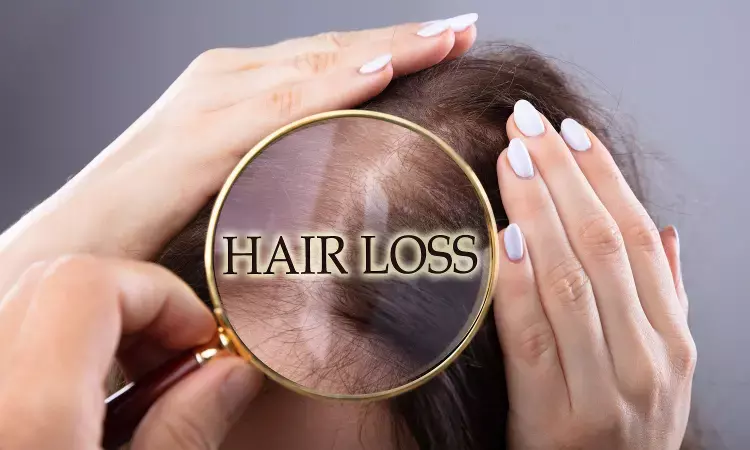- Home
- Medical news & Guidelines
- Anesthesiology
- Cardiology and CTVS
- Critical Care
- Dentistry
- Dermatology
- Diabetes and Endocrinology
- ENT
- Gastroenterology
- Medicine
- Nephrology
- Neurology
- Obstretics-Gynaecology
- Oncology
- Ophthalmology
- Orthopaedics
- Pediatrics-Neonatology
- Psychiatry
- Pulmonology
- Radiology
- Surgery
- Urology
- Laboratory Medicine
- Diet
- Nursing
- Paramedical
- Physiotherapy
- Health news
- Fact Check
- Bone Health Fact Check
- Brain Health Fact Check
- Cancer Related Fact Check
- Child Care Fact Check
- Dental and oral health fact check
- Diabetes and metabolic health fact check
- Diet and Nutrition Fact Check
- Eye and ENT Care Fact Check
- Fitness fact check
- Gut health fact check
- Heart health fact check
- Kidney health fact check
- Medical education fact check
- Men's health fact check
- Respiratory fact check
- Skin and hair care fact check
- Vaccine and Immunization fact check
- Women's health fact check
- AYUSH
- State News
- Andaman and Nicobar Islands
- Andhra Pradesh
- Arunachal Pradesh
- Assam
- Bihar
- Chandigarh
- Chattisgarh
- Dadra and Nagar Haveli
- Daman and Diu
- Delhi
- Goa
- Gujarat
- Haryana
- Himachal Pradesh
- Jammu & Kashmir
- Jharkhand
- Karnataka
- Kerala
- Ladakh
- Lakshadweep
- Madhya Pradesh
- Maharashtra
- Manipur
- Meghalaya
- Mizoram
- Nagaland
- Odisha
- Puducherry
- Punjab
- Rajasthan
- Sikkim
- Tamil Nadu
- Telangana
- Tripura
- Uttar Pradesh
- Uttrakhand
- West Bengal
- Medical Education
- Industry
Novel dissolvable microneedle patch can treat root cause of baldness: Study

China: Researchers from China have designed a preliminary microneedle patch containing cerium nanoparticles that helped in regrowing hair in a mouse model faster than a leading treatment. The study showed that the patch can combat oxidative stress and insufficient circulation -- the primary causes for baldness. The findings are published in the journal ACS Nano.
The most common hair loss condition is called androgenic alopecia, also known as male- or female- pattern baldness. Hair loss is permanent for people with the condition because there aren't enough blood vessels surrounding the follicles to deliver nutrients, cytokines and other essential molecules. In addition, an accumulation of reactive oxygen species in the scalp can trigger the untimely death of the cells that form and grow new hair.
Previously, Fangyuan Li, Jianqing Gao and colleagues determined that cerium-containing nanoparticles can mimic enzymes that remove excess reactive oxygen species, which reduced oxidative stress in liver injuries, wounds and Alzheimer's disease. However, these nanoparticles cannot cross the outermost layer of skin. So, the researchers wanted to design a minimally invasive way to deliver cerium-containing nanoparticles near hair roots deep under the skin to promote hair regrowth.
As a first step, the researchers coated cerium nanoparticles with a biodegradable polyethylene glycol-lipid compound. Then they made the dissolvable microneedle patch by pouring a mixture of hyaluronic acid -- a substance that is naturally abundant in human skin -- and cerium-containing nanoparticles into a mold. The team tested control patches and the cerium-containing ones on male mice with bald spots formed by a hair removal cream. Both applications stimulated the formation of new blood vessels around the mice's hair follicles. However, those treated with the nanoparticle patch showed faster signs of hair undergoing a transition in the root, such as earlier skin pigmentation and higher levels of a compound found only at the onset of new hair development. These mice also had fewer oxidative stress compounds in their skin. Finally, the researchers found that the cerium-containing microneedle patches resulted in faster mouse hair regrowth with similar coverage, density and diameter compared with a leading topical treatment and could be applied less frequently. Microneedle patches that introduce cerium nanoparticles into the skin are a promising strategy to reverse balding for androgenetic alopecia patients, the researchers say.
Reference:
The study titled, "Ceria Nanozyme-Integrated Microneedles Reshape the Perifollicular Microenvironment for Androgenetic Alopecia Treatment," is published in the
https://pubs.acs.org/doi/10.1021/acsnano.1c05272
Hina Zahid Joined Medical Dialogue in 2017 with a passion to work as a Reporter. She coordinates with various national and international journals and association and covers all the stories related to Medical guidelines, Medical Journals, rare medical surgeries as well as all the updates in the medical field. Email: editorial@medicaldialogues.in. Contact no. 011-43720751
Dr Kamal Kant Kohli-MBBS, DTCD- a chest specialist with more than 30 years of practice and a flair for writing clinical articles, Dr Kamal Kant Kohli joined Medical Dialogues as a Chief Editor of Medical News. Besides writing articles, as an editor, he proofreads and verifies all the medical content published on Medical Dialogues including those coming from journals, studies,medical conferences,guidelines etc. Email: drkohli@medicaldialogues.in. Contact no. 011-43720751


